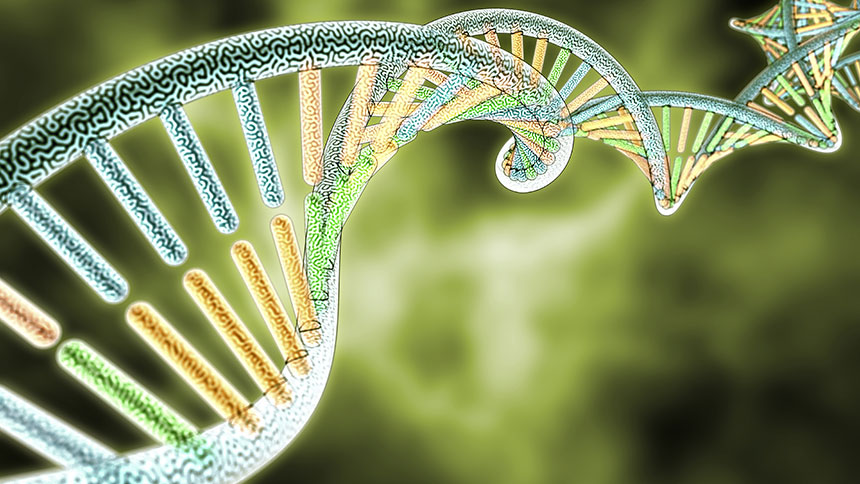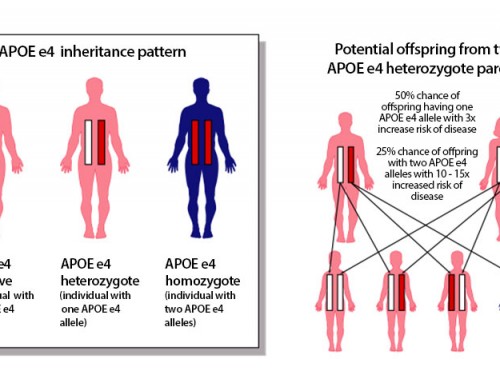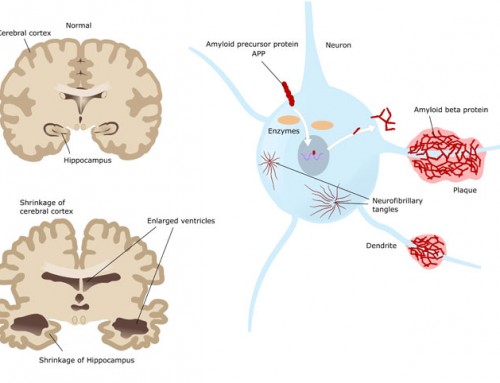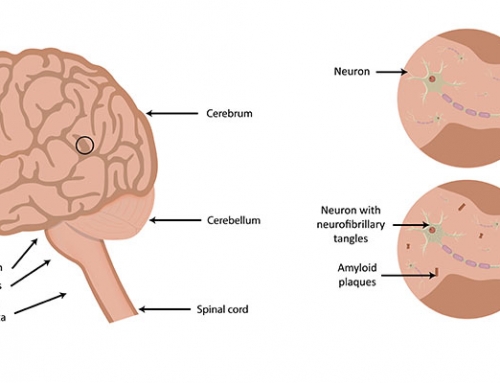The APOE Genetics of Alzheimer’s Disease
There are two general types of Alzheimer’s disease known as Early-Onset Familial Alzheimer’s and Late-Onset Alzheimer’s. Both diseases have similar symptoms and progression, but differ in the age of onset and the genetic cause. Early-Onset Alzheimer’s only occurs in less than 10% of cases and the first symptoms appear before the age of 65. This form of the disease is linked to mutations in the PSEN1, PSEN2 and APP genes. More than 90% of Alzheimer’s patients do not show any symptoms until after 65 years of age and are affected by the Late-Onset form of the disease.
Changes in the APOE gene are linked to an increased risk of Late-Onset Alzheimer’s disease. APOE encodes the Apolipoprotein E protein, which is essential for packaging and carrying cholesterol and fats through the bloodstream. The genetic test offered here determines which variations of the APOE gene you have, from just a simple, painless mouth swab. Each person has two copies of the APOE gene, which could be two copies of the same form (homozygotes) or two different copies (heterozygotes). There are three forms (or alleles) of the APOE gene that differ at just two positions in the protein sequence – amino acids 112 and 158.
The increased risk allele of APOE is known as APOE e4 and is present in 13.7% of the general population, but occurs in approximately 40% of Alzheimer’s patients. This allele has an arginine amino acid at both positions 112 and 158. Individuals who are APOE e4 homozygotes have a 10- to 15-fold increased risk of developing Late-Onset Alzheimer’s disease and it is more likely to occur at a younger age (68 years). They will pass an APOE e4 allele to each of their children. Individuals who are APOE e2/e4 (or APOE e3/e4) heterozygotes have inherited an APOE e4 allele from one parent and an APOE e2 (or e3) allele from the other parent. Heterozygotes have a 3-fold increased risk of developing Late-Onset Alzheimer’s (with a median age of onset of 76 years) and a 50% chance of passing the increased risk APOE e4 allele to each of their children.
The most common form of APOE is known as APOE e3. This is known as a neutral allele, as it is not associated with any increased or decreased risk of Alzheimer’s disease. The APOE e3 allele has a cysteine amino acid at position 112 and an arginine at position 158. Individuals who are APOE e3 homozygotes have inherited one APOE e3 allele from each parent. They will only pass the APOE e3 allele to their children, and there is no chance of passing the high risk APOE e4 allele to the next generation.
One of the relatively rare APOE alleles is known as APOE e2. This allele is present in just 8.4% of the population and is associated with a slightly decreased risk of Alzheimer’s disease in APOE e2 homozygotes or APOE e2/e3 heterozygotes. There is no protective effect in APOE e2/e4 heterozygotes. The APOE e2 allele has a cysteine amino acid at both position 112 and 158. APOE e2 homozygotes have inherited one APOE e2 allele from each parent and will only pass this form of the gene to the next generation. APOE e2/e3 heterozygotes have inherited an APOE e2 allele from one parent and an APOE e3 allele from the other parent. They can pass either allele to each of their children, but again there is no chance of passing the high risk APOE e4 allele to the next generation.
References:
Cauwenberghe CV, Broeckhoven CV, Sleegers K (2016). The genetic landscape of Alzheimer disease: clinical implications and perspectives. Genetics in Medicine, 18(5): 421-430.
Goldman JS, Hahn SE, Catania JW, LaRusse-Eckert S, Butson MB, Rumbaugh M, … Bird T (2011). Genetic Counseling and Testing for Alzheimer Disease: Joint Practice Guidelines of the American College of Medical Genetics and the National Society of Genetic Counselors. Genetics in Medicine, 13(6): 597-605.
Hollingworth P, Green RC (reviewed July 2012). Genetics of dementia.
Genovate Laboratories2017-04-06T00:20:02+00:00






